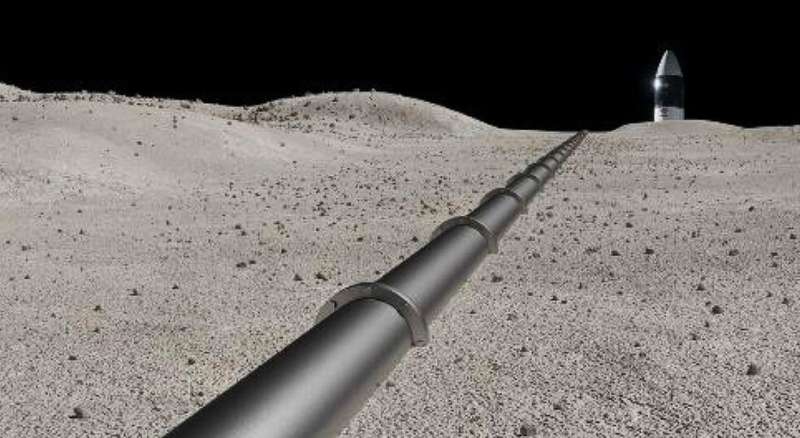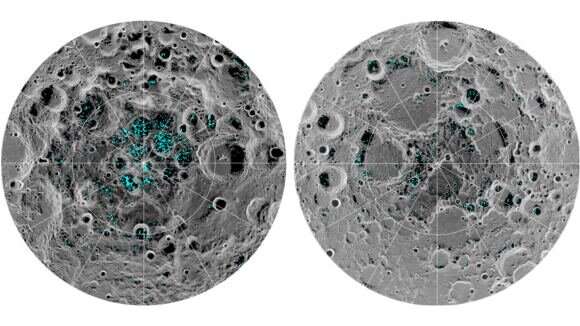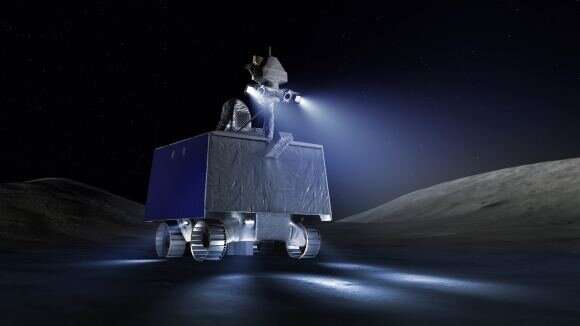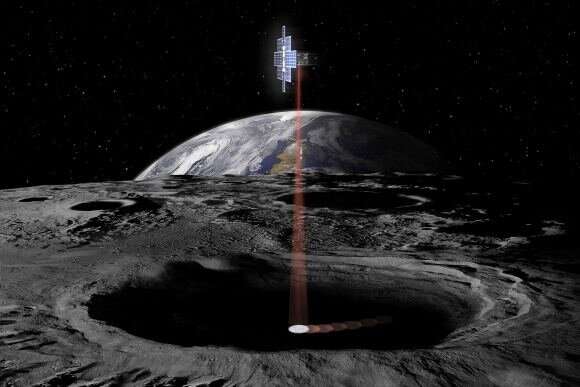This article has been reviewed according to Science X's editorial process and policies. Editors have highlighted the following attributes while ensuring the content's credibility:
fact-checked
trusted source
proofread
One day, there could be a pipeline of oxygen flowing from the moon's south pole

The Artemis program intends to put humans on the moon for the first time since NASA's Apollo missions. But Artemis has a larger scope than just landing people there, setting up some science experiments, gathering moon rocks, playing a little golf, then leaving. The intent is to establish a consistent presence.
That will require resources, and one of those critical resources is oxygen.
Dr. Peter A. Curreri has been a NASA scientist for decades and has been a strong proponent of human spaceflight. Since 2021, Curreri's been the Chief Science Officer for Lunar Resources, Inc. Lunar Resources is proposing a novel concept for Artemis: an oxygen pipeline.
An ongoing human presence on Mars requires a few things to succeed, and the foundation of success is built on water and oxygen. The lunar south pole contains vast quantities of primordial water ice, frozen solid in the region's craters where sunlight never reaches it. That ice can be melted and separated into hydrogen and oxygen.
Everyone involved in lunar science knows this, and the established idea is that the ice would be processed in situ, and oxygen would be put in cryogenic pressure vessels called dewars and transported to wherever it was needed. Since the equatorial regions have the most sunlight and the most solar energy, that's likely where lunar bases will be established.

But instead of bottling oxygen and transporting it, which could get complicated, Lunar Resources has another idea: construct an oxygen pipeline from the ice deposits at the south pole or from where oxygen is being extracted from the regolith to facilities elsewhere on the moon. That idea has caught NASA's attention, and the Lunar South Pole Oxygen Pipeline (LSPOP) is a Phase One project at NIAC, the NASA Innovative Advanced Concept program.
"We propose the Lunar South Pole Oxygen Pipeline (L-SPoP), a gaseous oxygen pipeline at the moon's south pole," Curreri writes in a press release explaining the idea. "A lunar pipeline has never been pursued and will revolutionize lunar surface operations for the Artemis program and reduce cost and risk."
Oxygen is critical. We need it in human habitats, in vehicles, and in any life-support systems anywhere on the moon. We also need it as an oxidant for rocket fuel. Ferrying large quantities of oxygen from the south pole to the equator could be cumbersome and would require dedicated vehicles, tanks, and facilities. A pipeline would eliminate vehicles and other resources, including human work hours, from the process.
"The process of moving this oxygen on rovers is more energy intensive than the extraction process and is thought to be the MOST expensive aspect in obtaining in-situ oxygen for use on the moon considering the long distances a resource extraction area will be from a human habitat or liquification plant," Curreri writes.

NASA has already invested significant funding in oxygen and water extraction. Some efforts show that we could get enough oxygen from the regolith. But water can only come from the ice at the poles, and it makes sense to get oxygen from there since some of the water will need to be split to get hydrogen anyway.
Pipelines on Earth are a problem. But not on the moon. For a lunar oxygen pipeline, leaks don't matter. They don't pollute or cause any damage. The oxygen simply escapes. There's no shifting or changing surface to disrupt the pipeline. The only potential hazard is an impact.
Lunar Resources will explore different ideas for its lunar pipeline concept, but they're starting with a 5 km pipeline. "Our starting concept is for a 5 km pipeline to transport oxygen gas from an oxygen production source, for example, our molten regolith electrolysis (MRE) extraction site or any other source, to an oxygen storage/liquification plant near a lunar base," Curreri explains.
LSPOP would be manufactured in segments on the moon's surface and then joined together in a five km length. The pipeline would likely be made of aluminum, which is plentiful on the moon's surface, especially at the south pole. "Other in-situ metals which will also be analyzed for consideration include iron and magnesium," Curreri writes.

The pipeline would be long-lived, repairable, and evolvable. It would also be cheaper than other methods, though lunar manufacturing would still need some support from Earth.
Lunar Resources says the pipeline could be constructed robotically from metals from the lunar regolith, though some minimal use of Earth materials would still be needed. It could also be repaired robotically. NASA projects that Artemis will need 10,000 kg of oxygen per year initially, and the LSPOP can reach deliver that with a flow rate of about 2kg/hour. It needs minimal power over its lifetime, would be very reliable, and its lifetime in the lunar environment would exceed 10 years.
The Lunar South Pole Oxygen Pipeline is a Phase One selection in the NIAC Program. That means NASA will fund a 9-month-long study for the concept. It provides an opportunity to explore the overall viability and advance the Technology Readiness Level (TRL) of the LSPOP. After Phase One ends, Lunar Resources can apply for Phase Two funding, which develops concepts for up to two years.
Provided by Universe Today





















